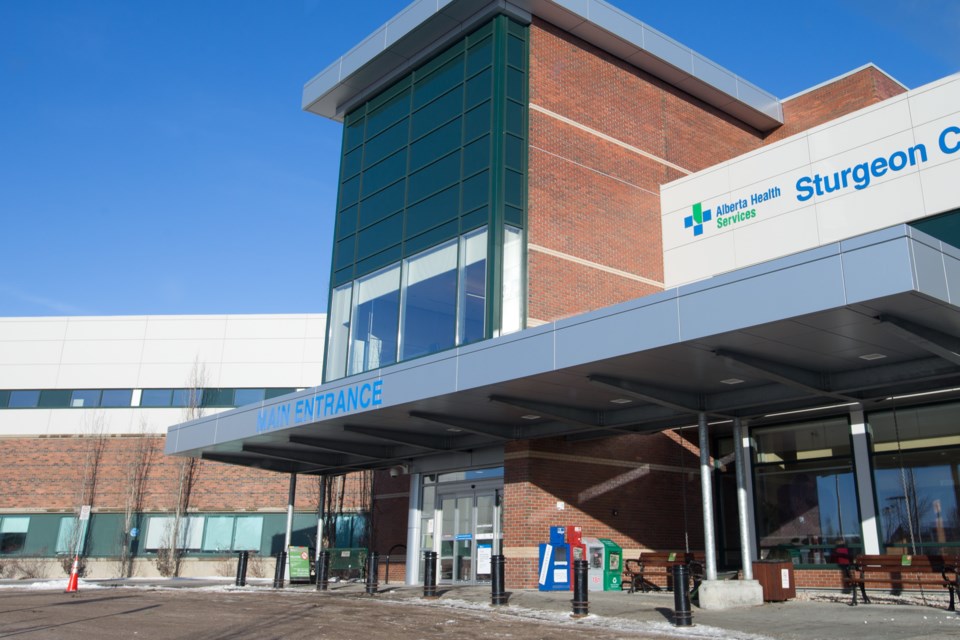Health-services workers have filed more than 4,000 Workers Compensation Board claims related to COVID-19 since the pandemic began.
Data from the Workers Compensation Board (WCB) of Alberta show that since the pandemic began, there have been 4,413 COVID-19 related claims filed by health-services workers, with 2,427 filed in 2020 and another 1,986 filed in 2021.
Overall across the province some 176,041 WCB claims have been filed with the board since the start of 2020, with 13,959 of those claims COVID-19-related making COVID-19 claims 11.3 per cent of all claims in 2021 and around 5.8 per cent of all claims in 2020.
Health-services workers made up 32 per cent of the total COVID-19-related claims filed in the province.
United Nurses Union second vice president Cameron Westhead said he was not surprised to hear there were many claims filed by health-services workers
“It's a very infectious disease and it's a novel thing that we were dealing with,” Westhead said.
The nurses' union spokesperson said health-care workers were fighting an airborne virus and just wearing a simple surgical mask won’t protect against it.
“We weren't provided with all the protections that we perhaps should have had from the beginning,” Westhead said.
Nurses and health-care workers are worried they would contract COVID-19 on the job and take it home to their families.
“When the pandemic first started there were a lot of unknowns, and when we don’t know things, it's easy to fear them,” Westhead said.
Nurses and health-care workers had a careful and ritualized practice of putting on PPE several times a day for months, and Westhead said it just takes one slip to become contaminated and bring the virus home to the family.
On top of worrying about contracting COVID-19, Westhead said nurses and other health-care workers have suffered from moral distress, which is when nurses know what kind of care they need to provide to their patients, but for whatever reasons they aren’t given the resources to provide that care.
Many nurses and other health-care workers have been redeployed during COVID-19, going to units in which they have little training to rely on, and it can be disorienting. In other situations the short staffing, patient load, or lack of equipment can contribute to moral distress.
Education workers put in 85 COVID-19 claims in 2020, with 229 in 2021. Alberta Teachers Association president Jason Schilling said most teachers would not file claims through WCB, but would go through other agencies, so those numbers would be for employees such as bus drivers, custodial staff, and support staff.
“They’re dealing with the same stuff that teachers are,” Schilling said.
Schools saw an uptick in COVID-19 cases in 2021, so Schilling said it wasn’t surprising to see those numbers increase in the data for that time period.
There was a lot of anxiety for those working in schools this year and there was fear of contracting COVID-19 as the cases increased in schools.
“It was a super stressful school year and I know that the anxiety that teachers felt was also shared by everybody else who's working in the building, so I'm not surprised to see that those numbers have gone up,” Schilling said.
During the pandemic, municipal government workers submitted 692 WCB claims for COVID-19, while manufacturing employees had 2,656 COVID-19-related claims. Construction workers had 104 COVID-19 related claims in 2020, but that jumped drastically to 1,257 so far in 2021.
Those working in mining, oil, and gas had only 181 COVID-19-related WCB claims in 2020, but that jumped to 1,003 claims so far for 2021.
Those working in the trades filed 666 COVID-19-related WCB claims in 2020, and another 813 so far in 2021.
Overall COVID-19 related claims cost $1.8 million in 2020 and $889,000 in 2021, for a total of $2.7 million in health-care costs since the pandemic began. These health-care costs only reflect treatment costs, and do not include any compensation payment costs or pension costs.
The most common symptoms reported to WCB in the early days of the illness — up to 30 days before the infection date — are vomiting, loss of taste or smell, runny nose, chills, and congestion.
The most common symptoms reported to WCB in later stages of the illness — 30 days after the infection date — are respiratory distress, weakness and exhaustion, acute upper and lower respiratory infections, and pneumonia.
Fatigue, confusion, generalized aches and pains, chest pain, respiratory distress syndrome, shortness of breath, seizures, and difficulty walking commonly appear in the later stages of the disease, though they are not unique to the later stages.
The average time away from work for COVID-19-related claims was 15.1 days, and 98.7 per cent of employees returned to work.
WCB had 17 accepted fatality claims for COVID-19.



